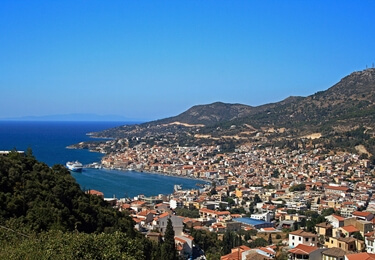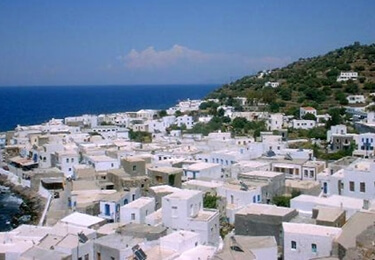 Nisyros is a small volcanic island, a mere 41 square kilometres in area, situated between Kos and Tilos. The volcanic landscape that resembles the moon, is combined with lush vegetation, curiously though, as the island is waterless. The scientific explanation is that the soil holds moisture, being rich in minerals.
Nisyros is a small volcanic island, a mere 41 square kilometres in area, situated between Kos and Tilos. The volcanic landscape that resembles the moon, is combined with lush vegetation, curiously though, as the island is waterless. The scientific explanation is that the soil holds moisture, being rich in minerals.
Greece
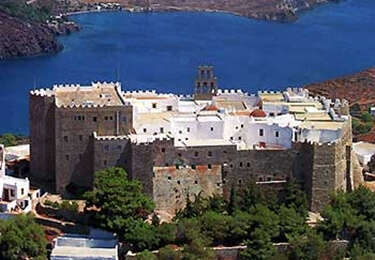 "The Jerusalem of the Aegean" is one way of describing Patmos, a place of pilgrimage for the Christians. It was here that St. John the Theologian was exiled between 95 and 97 A.D., and was inspired to write the Book of Revelation or Apocalypse.
"The Jerusalem of the Aegean" is one way of describing Patmos, a place of pilgrimage for the Christians. It was here that St. John the Theologian was exiled between 95 and 97 A.D., and was inspired to write the Book of Revelation or Apocalypse.
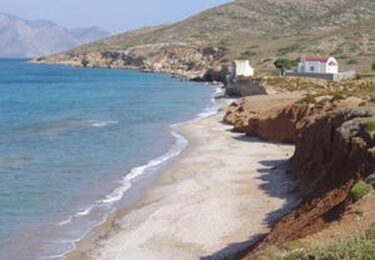 It lies between Kos and Kalymnos. It has an excellent beach, a restaurant and fish tavernas. Like in Telendos, there is little tourism , but it is worth being visited. Pserimos is on of the smallest inhabited islands in the Dodecanese. The island has an area of 16 km². All together only about 40 people live on Pserimos. You get the idea. If you look for an island off the beaten track Pserimos is the place to be.
It lies between Kos and Kalymnos. It has an excellent beach, a restaurant and fish tavernas. Like in Telendos, there is little tourism , but it is worth being visited. Pserimos is on of the smallest inhabited islands in the Dodecanese. The island has an area of 16 km². All together only about 40 people live on Pserimos. You get the idea. If you look for an island off the beaten track Pserimos is the place to be.
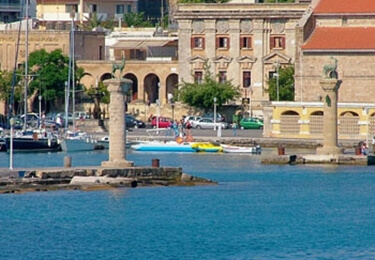
The largest of the Dodecanese, Rhodes has become an important regional center, thanks to its location, climate and natural attractions.It is known as the island of the Sun. The myth says that it was born of the union of Helios (the sun god) and nymph Rhoda; no wonder why the island is blessed with 300 days of sunshine per year!
In ancient times Samos was an especially rich and powerful city-state, particularly known for its vineyards and wine production. It is home to Pythagoreion and the Heraion of Samos, a UNESCO World Heritage Site that includes the Eupalinian aqueduct, a marvel of ancient engineering. Samos is the birthplace of the Greek philosopher and mathematician Pythagoras. Samian wine was well known in antiquity, and is still produced on the island.
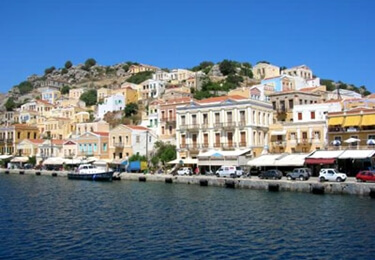
A lovely, mountainous island, Symi (or Simi) was reputed to be the birthplace of the Three Graces. While its interior is punctuated with small valleys, its coastline alternates between being steep and rocky or sandy and indented with little coves.The island took its name from the nymph Syme, who was Poseidon's wife.
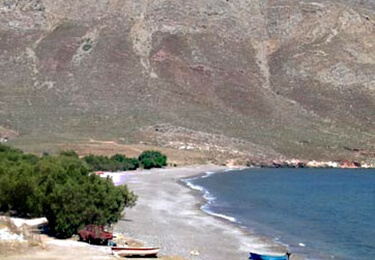 Although small, this island situated to the south of Nisyros captures the imagination of anyone interested in paleontology, for here there once lived the prehistoric dwarf elephant, whose skeletons were found in one of its caves.
Although small, this island situated to the south of Nisyros captures the imagination of anyone interested in paleontology, for here there once lived the prehistoric dwarf elephant, whose skeletons were found in one of its caves.
The capital of Tilos is Megalo Horio (literally Big Village), located in the interior to the north of the island. It is built like an amphitheatre on a hillside topped by a ruined castle erected by the Knights. The village occupies the site of the ancient town, the remains of which can still be seen scattered among the houses.

